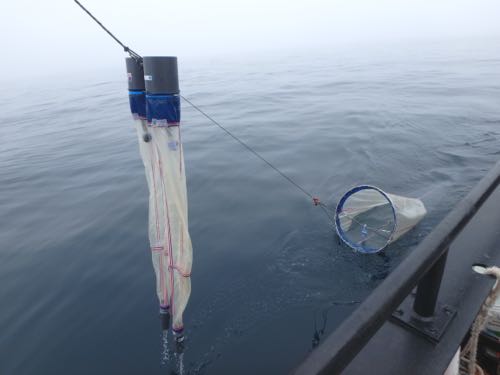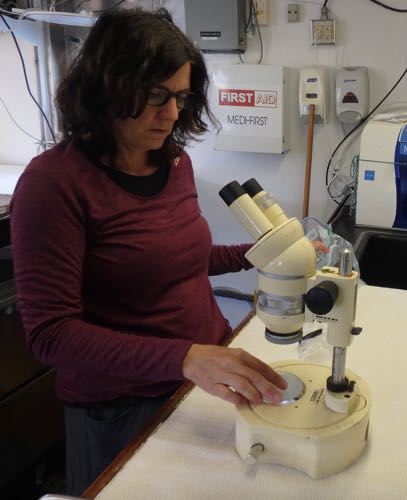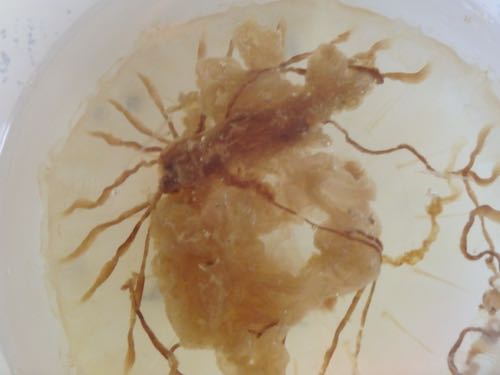
Every few hours, the ship slows down and we know it's getting close to the time to start sampling. There are stations, only identifiable by GPSA Global Positioning System (GPS) is a satellite-based navigation system used to track the location or position of objects on the Earth’s surface., at which we will use the CTDA research tool that is submerged in the water to measure conductivity (salinity), temperature, and depth. (conductivity, temperature, and depth) instrument and three tow nets, a large 1-meter net and 2 smaller, 20 cm nets. These two types of nets have different mesh sizes. The 1-meter net is 500 microns and the 20 cm net is 150 microns. These nets are designed to collect different size fractions of plankton. The 1-meter net has an opening large enough to sample the jellyfish, which are rare in relation to other zooplankton such as copepods. These nets are pulled in a very specific angle and as the ship moves slowly, these nets follow an oblique path.

While these nets are underwater for a few minutes, we getting the materials ready to record data. On every data sheet, we have the date, time, station number, volume of water flow, and the latitude and longitude.
When the tow nets come out of the water, we record how much water has flowed through them. The net containers are then taken into the wet lab where we identify, measure and preserve the sample in jars marked with the date, station number and geographical location.

If there is an organism that we need to identify, we put the organism under a microscope and use identification keys to make a decision about what species it is. Here is a photo of the jellyfish found in one of our samples: Chrysaora melanaster, also known by its common name "the Northern Sea Nettle".

Ultimately, these samples will be analyzed in the lab with the aid of a microscope. Dr. Mary Beth Decker and her team will count and identify all of the organisms in each sample. From this information, the scientists can estimate the abundance of each species at each station. By analyzing these samples, the scientists can see if the samples correlate with the ZooVis images in terms of numbers and species observed during the transect.
We sample several times a day, but I go into this routine of sampling each time with fresh eyes. One station can be very different from the next in terms of what comes up each time in the nets. This is also illustrative of the nature of science. Scientists establish a procedure and follow it in order not to introduce error. More data is better than less, especially if it can be correlated with data from another source, such as the ZooVis. To draw conclusions, scientists rely on a wealth of data. Another important aspect of this research that has impressed me is the flexibility one must have when conducting research far away from a hardware store. The ability to make adjustments and innovate are keys to carrying out research.


Comments